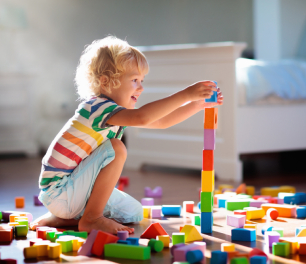知識分享
歐盟全新玩具安全法規如何重塑兒童安全標準
2025.07.14
如果你在歐洲製造、銷售或購買玩具,2025年7月將是一個重大轉捩點 — 歐盟新版《玩具安全規則》將全面實施。這不僅是一次小修訂,而是一場針對現代風險的全面改革,前所未有地強調化學安全,並引入革命性的數碼產品護照(DPP)。新版的玩具安全指引將更為嚴格、更全面及更透明。
為什麼需要大幅改革?
兒童是特別脆弱的群體,他們透過嘴巴探索世界,且與玩具互動頻繁,但身體尚在發育,對毒素的抵抗力較低。雖然舊版指令已有一定強度,但面對科學發展、新物料與複雜的全球供應鏈,仍需不斷強化。新版規則的目標,是打造全球最高的兒童保護標準。
化學物質大整頓:針對隱藏毒素
新規則對玩具中有害的化學物質採取更嚴格的限制,重點包括:
- 大幅擴展禁用清單:
- 新增數百種已知具致癌性、致突變性或生殖毒性(CMRs),或具持久性、生物累積性與毒性(PBTs)的化學物質,全面禁止使用
- 嚴管內分泌干擾物(EDCs):
- 對已知或疑似干擾荷爾蒙系統、影響發育、生育及代謝的物質(如鄰苯二甲酸酯、雙酚類)實施嚴格限制,特別針對牙膠、洗澡玩具與塑膠公仔等產品
- 限制「永久化學物質」(PFAS):
- 因應公眾高度關注,禁止在可能被兒童放入口中的玩具部件中使用具防水防污功能的全氟及多氟烷基物質(PFAS)
- 更嚴格的遷移限值:
- 大幅降低重金屬(如鉛、鎘、汞)在模擬唾液或胃酸條件下從玩具中釋出的容許量
- 過敏原標示強化:
- 除現有的55+1種已知致敏香料外,新增標示要求,有助對香料敏感的兒童避開風險
- 考量總體暴露風險:
- 兒童會同時接觸多種玩具,新規則要求評估來自不同玩具的化學物質累積暴露風險
劃時代變革:數碼產品護照(DPP)
這可能是最具顛覆性的創新。未來每一件在歐盟市場銷售的玩具都將需要一個獨一無二的數碼產品護照(預計2027年起強制實施)。
這就像玩具的「數碼出生證明及履歷」,可透過二維碼或網上連結查閱:
- 前所未有的透明度:
- 消費者與監管機構可即時查閱以下資訊:
- 完整的物料資訊: 含所有成分與受限物質的濃度
- 安全數據及證書: 符合 EN 71 系列等標準的證明
- 製造商及進口商資訊: 可追溯來源
- 使用及保養說明: 多語言版本
- 產品報廢指引: 回收或處理建議
- 消費者與監管機構可即時查閱以下資訊:
- 增加消費者信心:
- 家長及照顧者可根據實際數據做出更安全的選擇,而非僅憑行銷策略
- 強化執法效率:
- 市場監管機構可快速驗證合規性、追蹤違規產品並更有效地進行抽查
- 推動可持續發展:
- 詳細的材物料資訊有助回收與實踐循環經濟
- 供應鏈透明化:
- DPP 要求全面揭露原料到成品的資料,品牌無法再隱藏不透明的供應鏈
對玩具業不同角色的影響
- 製造商及進口商:
- 化學測試及供應鏈追蹤成為基本要求。投資於合規材料及 DPP 數據管理系統雖具挑戰性,但也可能透過成為安全產品提高競爭優勢
- 零售商:
- 必須加強盡職調查,與合規供應商合作,確保 DPP 資訊完整且準確,以避免法律責任與產品召回
- 消費者(家長/照顧者):
- 準備掃描二維碼,於購買產品前參考相關資訊,為孩子做出更安全的選擇
歐盟新版《玩具安全規則》,特別是其嚴格的化學限制與創新的數碼產品護照,樹立了全球新標準。它不再僅僅防止物理傷害,更主動保護兒童免受潛在化學危害,並賦予消費者知情權。儘管實施過程充滿挑戰,但核心訊息明確:兒童的身心健康至上。玩具中的隱患時代即將結束,從每一個數碼產品護照開始,未來的遊戲世界將更安全及更透明。









